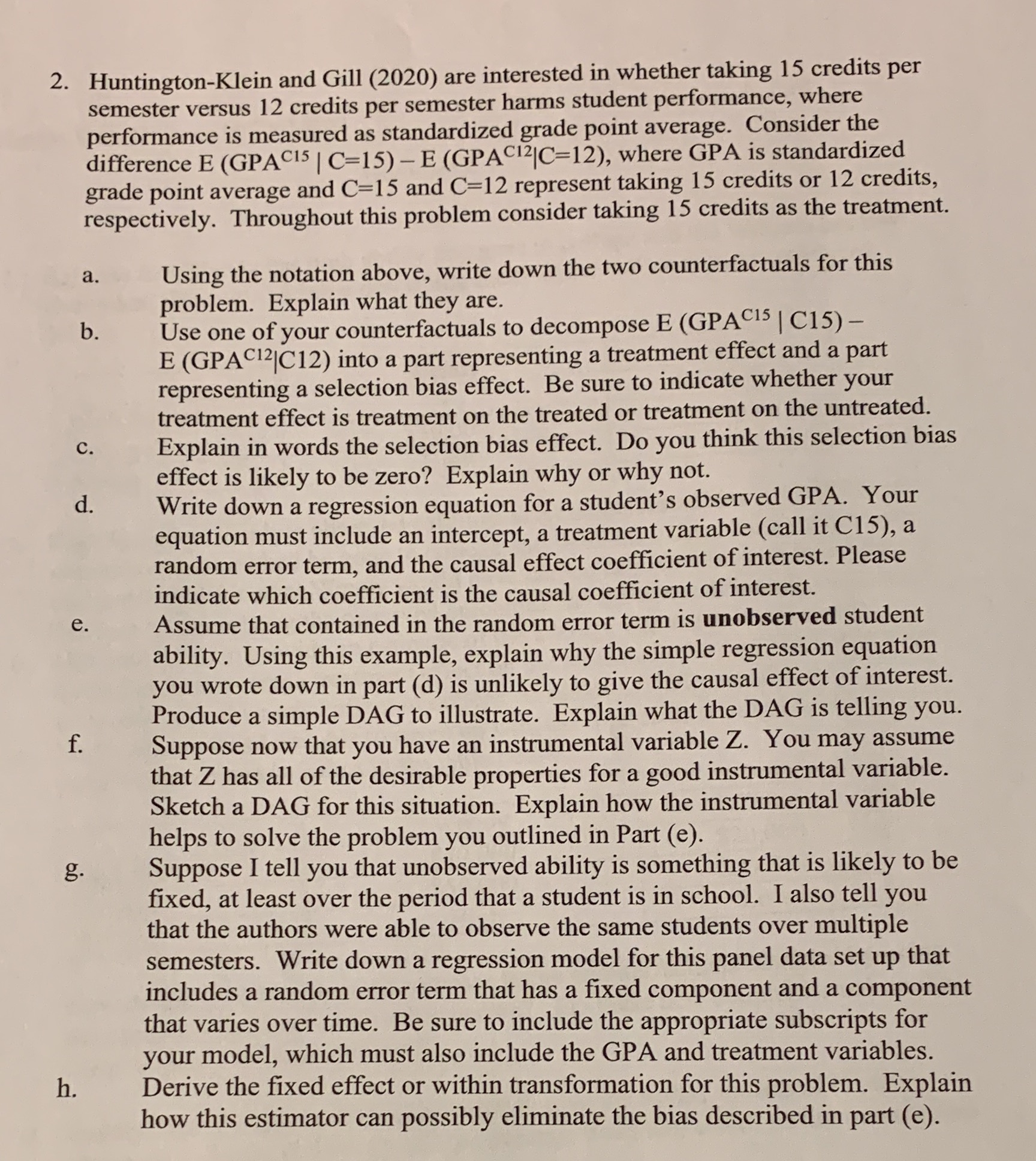2. Huntington-Klein and Gill (2020) are interested in whether taking 15 credits per semester versus 12 credits per semester harms student performance, where performance is measured as standardized grade point average. Consider the difference E (GPAC15 | C=15) - E (GPAC12|C=12), where GPA is standardized grade point average and C=15 and C=12 represent taking 15 credits or 12 credits, respectively. Throughout this problem consider taking 15 credits as the treatment. a. Using the notation above, write down the two counterfactuals for this b. problem. Explain what they are. Use one of your counterfactuals to decompose E (GPACIs | C15) - E (GPAC12|C12) into a part representing a treatment effect and a part representing a selection bias effect. Be sure to indicate whether your treatment effect is treatment on the treated or treatment on the untreated. C. Explain in words the selection bias effect. Do you think this selection bias d. effect is likely to be zero? Explain why or why not. Write down a regression equation for a student's observed GPA. Your equation must include an intercept, a treatment variable (call it C15), a random error term, and the causal effect coefficient of interest. Please indicate which coefficient is the causal coefficient of interest. e. Assume that contained in the random error term is unobserved student ability. Using this example, explain why the simple regression equation you wrote down in part (d) is unlikely to give the causal effect of interest. f. Produce a simple DAG to illustrate. Explain what the DAG is telling you. Suppose now that you have an instrumental variable Z. You may assume that Z has all of the desirable properties for a good instrumental variable. Sketch a DAG for this situation. Explain how the instrumental variable helps to solve the problem you outlined in Part (e). g. Suppose I tell you that unobserved ability is something that is likely to be fixed, at least over the period that a student is in school. I also tell you that the authors were able to observe the same students over multiple semesters. Write down a regression model for this panel data set up that includes a random error term that has a fixed component and a component that varies over time. Be sure to include the appropriate subscripts for your model, which must also include the GPA and treatment variables. h . Derive the fixed effect or within transformation for this problem. Explain how this estimator can possibly eliminate the bias described in part (e)







